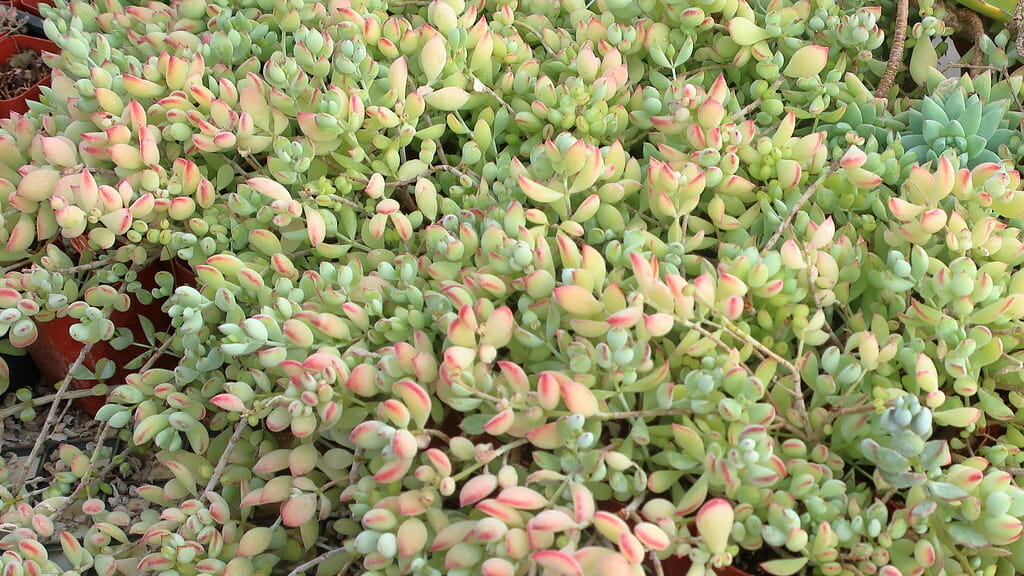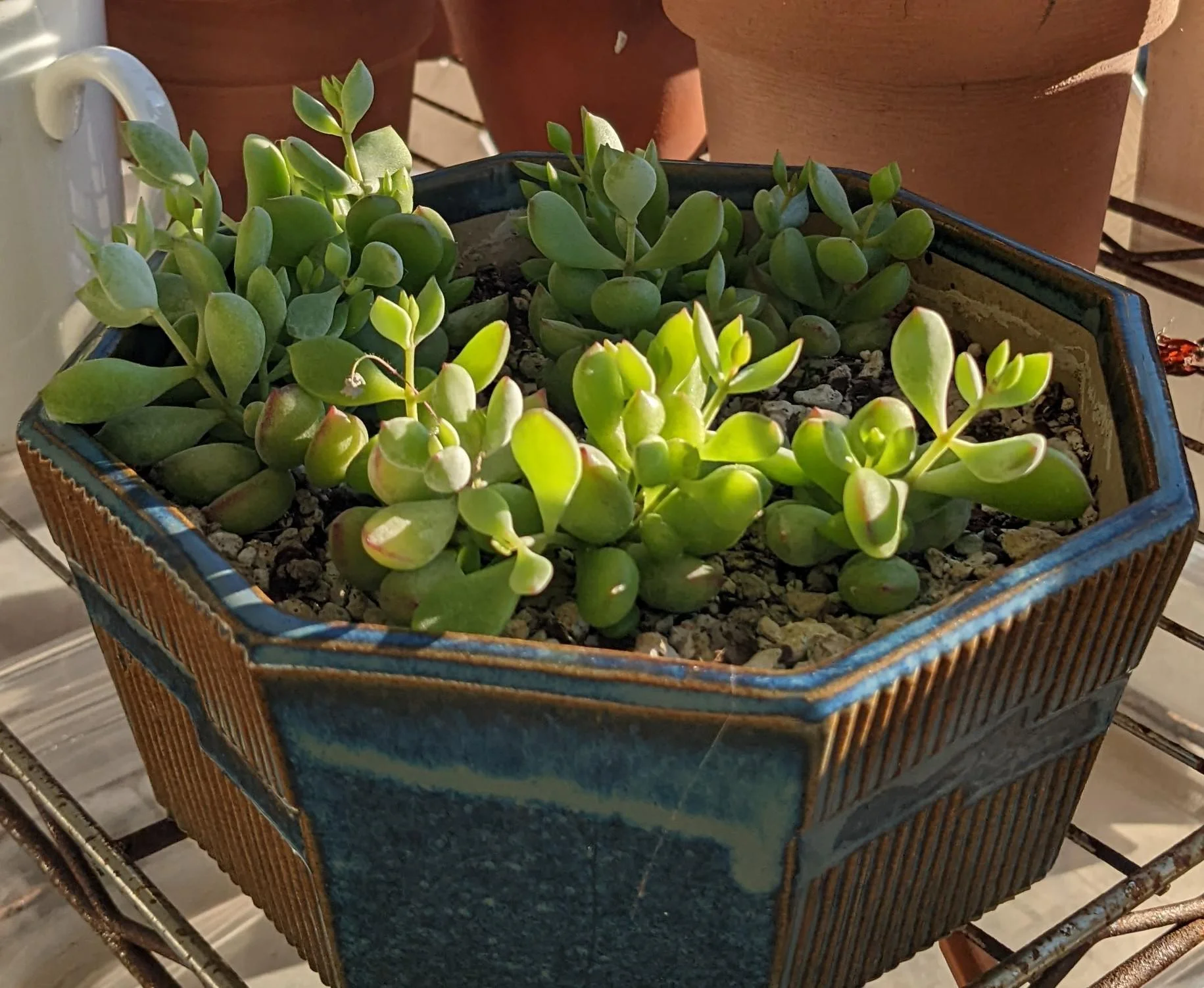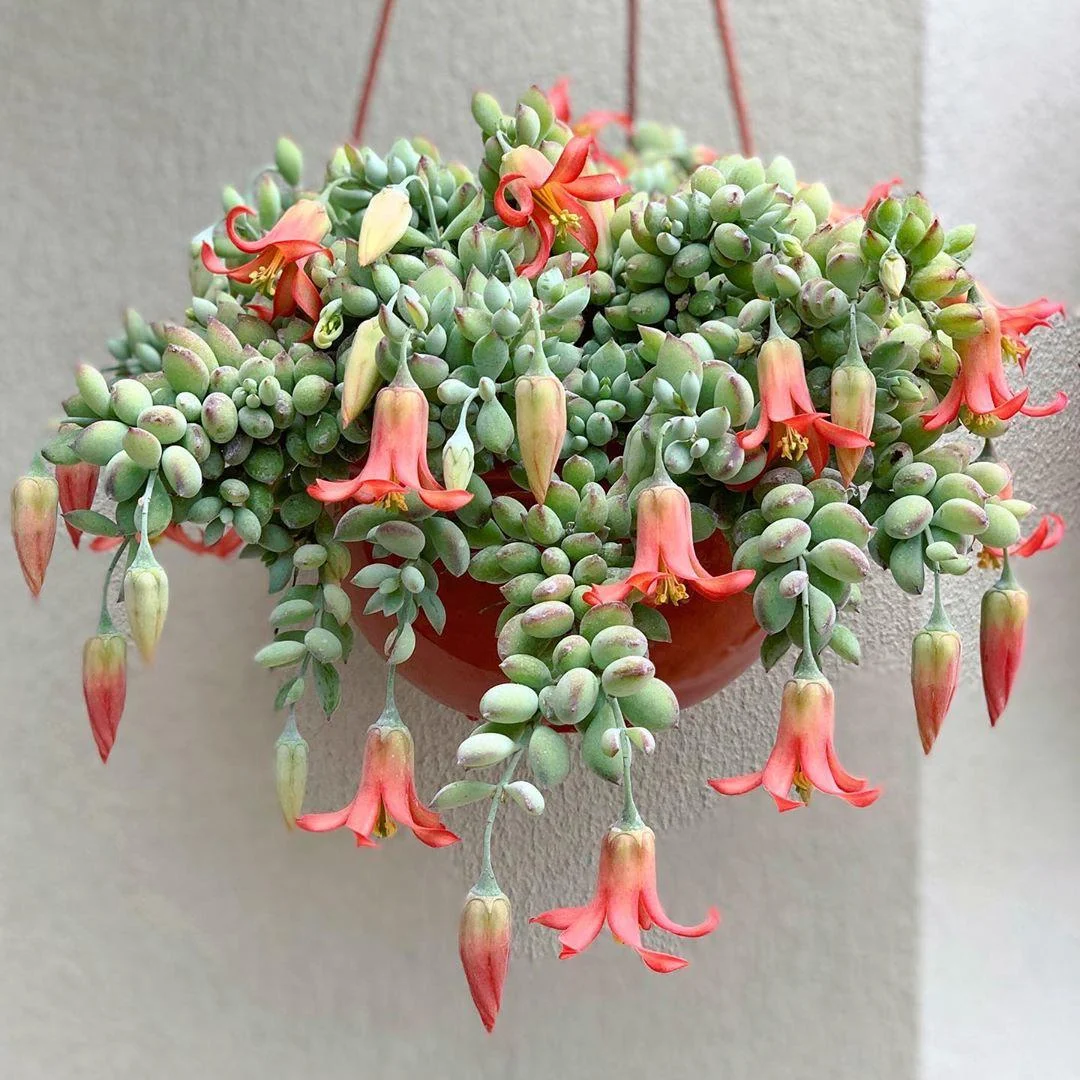A rare and stunning plant, the cotyledon pendens is a unique trailing succulent with delightful flowers that make a great addition to any household or garden.
In the wilds of South Africa, they can live in the most inhospitable environments, but what is the best way to care for them in your own space, and what are the essentials you need for success?
The five essentials that we think you need to care for your cotyledon pendens are a grow light, a well-draining pot, sandy soil, a hanging pot, and sharp pruning shears.
As with most plants, once you have their needs down, the cotyledon pendens will thrive and reward you with their beautiful blooms. All you need is a few essentials and a little extra know-how to nail growing this rare plant.
In this article, we will introduce you to cotyledon pendens and share with you the essentials that you need to help them thrive in your home or garden.
What is a Cotyledon Pendens?
Before we dive into the essentials you need to care for one of these lovely succulents, we need to get to know the cotyledon pendens a little better.
| Specifications | |
| Family | Crassulaceae |
| Light | Full sun to indirect sun |
| Soil | Sandy and loamy, acidic to neutral pH |
| Watering | Infrequent with drying time in between |
| Climate | Warm and dry, does not tolerate frost |
Cotyledon pendens is a rare succulent that is native to the Eastern Cape of South Africa, particularly along the Bashe River, where it inhabits the crevices of steep cliffs.
Their rarity is due to the fact that they are found in a small area rather than being a threatened species. They are just one of eleven cotyledon species in the Stonecrop family found across South Africa.
We do not doubt that these rare beauties are so popular because of their novel appearance. Their leaves are small, ovoid, plump, and grow along soft green and white stems at regular intervals. These stems branch out at regular intervals and grow so long that they hang, forming a curtain of beaded stems. The leaves will develop a burgundy rim around the edge if grown in full sun.
If that wasn’t attractive enough, it’s the flowers that grow off the ends of the stems that really steal the show! The vibrant orange blooms are bell-shaped, with five curling petals and ten yellow stamens protruding from the center.
These beautiful blooms will attract birds and insects into your garden if grown outdoors, so we suggest having a few hanging outside if you have the space.
One fact about these plants that we love picturing is the fact that they will root where they rest. So a stem may grow off the side of a cliff and reach down to another crevice lower down. At this point, it will root and continue growing a whole new plant! Plants really are magic. However, in a domestic setting, you will need to prune off these ends to stop them from getting out of control.
Cotyledon pendens grow very well indoors, but they also thrive outside if you are in a climate that gets milder winters. If they are planted where they can’t hang, they will form an intricate web-like ground cover that will help prevent soil erosion.
If you are growing your cotyledon pendens outdoors, we recommend bringing them inside in the winter to save them from getting too cold. While they might be drought tolerant, they certainly aren’t frost tolerant!
5 Essentials for Cotyledon Pendens Care
So, now that we know more about this incredible cliff climbing succulent, we need to know how to take care of them.
Luckily, as we mentioned above, these plants are very hardy and easy to take care of, so you don’t need anything complicated to take care of them.
Here are the five essentials you need to take care of your cotyledon pendens:
Grow Light
Yes, we know this might sound a bit technical, but we promise it’s nothing crazy.
Ideally, cotyledon pendens should get at least six hours of full natural light per day. However, if you are growing them inside, this might not be possible. That’s when the grow light will come in to save the day.
Grow lights can be bought for a relatively affordable price online or in a plant shop. They can also be set up simply at home. Many even come with a stand, so all you need to do is set it up next to your plant and plug it in. Place your cotyledon pendens under the grow light for twelve hours a day to promote growth.
If you use this method, we suggest rotating your plant every few days to ensure the whole plant is getting even light.
Well-Draining Pot
This may be a no-brainer, but if you want to achieve success with any houseplant, you need a well-draining pot.
Cotyledon pendens are very susceptible to root rot if they are exposed to moisture for too long, so draining is essential. This is taken care of by simply using a pot with a hole in the base. This can then be placed in a decorative pot or on a drip tray of some kind to catch any water or soil that may escape from the bottom.
To stop too much soil from escaping or the soil getting blocked, we recommend placing some garden pebbles at the bottom of the pot before you repot them. This will also help with your drainage.
This way, the plant gets just the right about of moisture, and the rest will simply drain away. However, it is not only a well-draining pot that will help with drainage; you also have to consider the soil, which we will get to next.
MUST READ: Bear Paw Succulent care guide!
Sand
Getting the soil right for your cotyledon pendens is key because it doesn’t grow best in regular potting soil like other plants. Just look at their natural environment; the side of a cliff is not likely to have a lot of dense, organic matter-filled soil with plenty of water, is it?
Cotyledon pendens prefer to be planted in sandy soil, so we recommend using a cactus or succulent potting mix that has 50-70% mineral grit. This should feature perlite, lava rock, or pumice, along with some organic material to keep the soil loose and well-drained.
Be careful not to splash any soil onto the plant when you are watering, as this can cause the leaves to discolor.
Once you pair the right pot with the right soil, you are well on your way to having a very happy cotyledon pendens.
Hanging Pot
We think the ideal way to grow a cotyledon pendens is in a hanging pot with a drainage hole at the bottom.
Why? Well, if you look at the way these plants grow in the wild, they enjoy an area that is well-drained where their stems can grow long and trail along the side of a slope. You can replicate that at home by using a hanging planter. This will let the stems hang in a stunning curtain that will be eye-catching in any home.
To water, remove the pot from the hanger and water until it drains out the bottom. Replace it back in its hanger on a small drip tray. Luckily, they do not require very frequent watering, so you won’t have to do this very often. We recommend watering only when the top inch of soil feels dry.
If your hanging pot is outside, this will make watering it far easier as you can simply allow the water to drain straight out of the pot without moving it.
Sharp Pruning Shears
As with many succulents, cotyledon pendens are very easy to propagate, which is where your pruning shears come in! We recommend using smaller shears with a pointed tip so you can get in between the leaves without damaging the plant.
These succulents can grow from leaf or stem cuttings. Simply take your shears and gently snip at the node of the leaf or cut a short piece of stem with a few leaves on it.
Now all you need to do is plant them in sandy soil and give them a good water. They will root very quickly. This is best done in the warmer months when new growth will happen easily.
Apart from making cuttings for propagating, your pruning shears will come in handy for regular pruning. Besides the fact that the stems could get overgrown and unruly, there are a number of reasons to prune your cotyledon pendens.
Pruning will promote growth and flowering during the summer. We recommend pruning in early spring to encourage more flowers to bloom through the summer. If further pruning is necessary, leave at least six months between prunings.
Frequently Asked Questions:
Are cotyledons pendens poisonous?
Unfortunately, cotyledon pendens is poisonous to dogs, cats, and rabbits if they eat it.
Luckily, it is the sap in the leaves that contain the toxin, so as long as you keep the plant out of their reach, then they should be safe.
This is where a hanging pot is also very helpful as it gets the plant off your surfaces and away from the ground, where your pets might get a little curious. Be sure to keep your cotyledon pendens pruned to prevent them from reaching down too low, and discard any dropped leaves or flowers immediately.
Do cotyledon penden’s leaves fall off?
The strings of leaves that cotyledon pendens form can be delicate if handled, so care should be taken when you are working with it, so you don’t lose any leaves.
If you notice leaves dropping off your plant of their own accord, it may be because they are receiving too much sunlight. This can be remedied by turning your plant regularly.
When do cotyledon pendens bloom?
Cotyledon pendens will flower throughout the middle of summer. This period may be limited, but it is so worth the wait!
Luckily, throughout the rest of the year, the strings of leaves are so appealing on their own that they will easily tide you over between seasons.
Do cotyledon pendens need fertilizer?
The only time we recommend using fertilizer is after repotting, as too much fertilizer can cause moss growth on the leaves.
A little fertilizer during repotting can help promote growth and revitalize any leaves that might look a bit droopy and lackluster.
It is key that you only use specialized cactus and succulent fertilizer, as other forms may cause the leaves to go brown and wither. This will also occur if you needlessly fertilize your plant.
Conclusion
We love the cotyledon penden for so many reasons!
Their round, juicy leaves look so pleasing, and the stunning red flowers are a welcome sight every season. Luckily, all you need to do is follow our little guide to be able to grow these at home with ease.
All in all, all the cotyledon pendens needs is nice sandy soil in a hanging pot and a few regular haircuts to grow beautiful and strong inside or out.
We hope this has armed you with all the knowledge and excuses that you need to add this wonderful plant to your collection. It has certainly done that for us!






